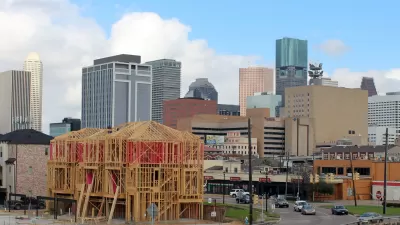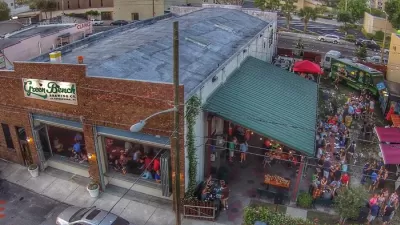Before 20th century urban renewal programs, U.S. cities were often overcrowded fire hazards and breeding grounds for tuberculosis and other airborne diseases. However, many of these programs also did severe damage. Is there a better way?
Nothing provides perspective like travel. China has some of the most dense cities in the world. Jim Chappell, former Executive Director of the San Francisco Planning and Urban Research think tank, recently took a trip to China. He was envious of the free civic museums in each Chinese city, which explained and documented the planning and development history of the city. He was also reminded that urban renewal, now a phrase with a strong negative connotation—so much so that the repeal of California's redevelopment law was welcomed from many corners—had its origin in real urban problems. Yet urban renewal, and its heir, redevelopment, created its own problems. Writes Chappell:
A few days in Asia and a few hours in the Hong Kong Museum of History reminded me that the issues urban renewal was addressing were also very real in America, as they were in Hong Kong. The problems with urban renewal cannot be dismissed as simply “racism” on the part of the elites or arrogance on the part of planning professionals. The problems they were addressing, including disinvestment and capital flight from cities, were difficult and complex. We don’t live in fear of massive urban fires or pestilence. It probably is really not necessary to wear a mask. But in the process, we destroyed vibrant communities and created a legacy of sorrow and dysfunction that permeates neighborhoods of our cities.
For more of Chappell's thoughts on urban renewal here and in China, please see the source article.
FULL STORY: Why we had Urban Renewal

Alabama: Trump Terminates Settlements for Black Communities Harmed By Raw Sewage
Trump deemed the landmark civil rights agreement “illegal DEI and environmental justice policy.”

Planetizen Federal Action Tracker
A weekly monitor of how Trump’s orders and actions are impacting planners and planning in America.

Why Should We Subsidize Public Transportation?
Many public transit agencies face financial stress due to rising costs, declining fare revenue, and declining subsidies. Transit advocates must provide a strong business case for increasing public transit funding.

Understanding Road Diets
An explainer from Momentum highlights the advantages of reducing vehicle lanes in favor of more bike, transit, and pedestrian infrastructure.

New California Law Regulates Warehouse Pollution
A new law tightens building and emissions regulations for large distribution warehouses to mitigate air pollution and traffic in surrounding communities.

Phoenix Announces Opening Date for Light Rail Extension
The South Central extension will connect South Phoenix to downtown and other major hubs starting on June 7.
Urban Design for Planners 1: Software Tools
This six-course series explores essential urban design concepts using open source software and equips planners with the tools they need to participate fully in the urban design process.
Planning for Universal Design
Learn the tools for implementing Universal Design in planning regulations.
Caltrans
Smith Gee Studio
Institute for Housing and Urban Development Studies (IHS)
City of Grandview
Harvard GSD Executive Education
Toledo-Lucas County Plan Commissions
Salt Lake City
NYU Wagner Graduate School of Public Service





























